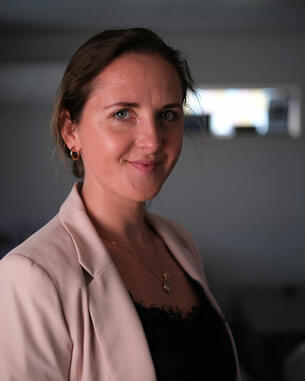Agnieszka W. Lach at the University of South-Eastern Norway, Faculty of Technology, Natural Sciences and Maritime Sciences, will be defending her thesis «Hydrogen Safety in confined spaces» for the degree of philosophiae doctor (PhD).

The trial lecture starts at 0930 and the PhD defense at 1200, and will be held at campus Porsgrunn in auditorium B-113.
Both the trial lecture and the PhD defense are open to the public, and everyone are welcome to participate via Zoom.
Summery
In a new era of renewable fuels in the transport sector, there is a need for diverse transport applications. Electrical cars are well established on the market and there are steady more hydrogen-powered vehicles (HPV) on the road. Just as electric vehicles had or still have challenges, the HPVs have theirs as well.
Even though the hydrogen applications and their risk are very well known in the industry sector, there are other rules and hazards when it comes to the public sector. Hazards, that need to be very thoroughly investigated to establish a set of best practices and mitigations.
A HPV has a fuel tank on board with hydrogen compressed to high pressures (up to 700 bar). The tank has a safety valve called TPRD (thermal pressure relief device). When the TPRD is activated the hydrogen is released. It is due to avoid the high pressures in the tank when is exposed to fire. How fast the release occurs is very important since the related hazards depend on it. The size of the TPRD diameter has a direct impact (together with pressure in the tank) on the amount of hydrogen released (e.g. gram per second).
This thesis presents large- and real-scale experiments performed to investigate the worst-case scenarios in the case of unwanted hydrogen leakage/release. When hydrogen is released in a confined space like a private garage, carpark, or ship compartment the scenarios are very different from those in an open space. Lack of proper mitigation may lead to enclosure collapse, formation of a flammable cloud, structural damage, and fatalities.
The 4 experimental campaigns were designed to investigate safety aspects as:
- overpressures from ignited and unignited hydrogen releases called Pressure Peaking Phenomena. The enclosure imitated a private garage but also can be applied to a ship compartment. A modified mathematical model was developed and can be used to design such compartments
- formation of the hydrogen-air mixture. The scenario imitated a carpark with a hydrogen leakage pointed down on the ground as it could happen from the HPV. The impact of the air flowing from the ventilation system was investigated. Different types of the releases from up to 700 bar were conducted in a real-scale experimental setup
- Thermal effects from ignited hydrogen jets pointed down on the ground. The obtained results show the information needed by the first responders. The information they must have when coming to an incident related to hydrogen jet fires.
Experiments show that hydrogen technology can be safely implemented in existing systems and infrastructure if the HPV follows the design recommendations.
The findings presented in the thesis are industry relevant and will be used to shape recommendations, codes, and standards in the EU with the collaboration of 13 other countries. The work was carried out at the University of South-Eastern Norway within HyTunnel-CS project.